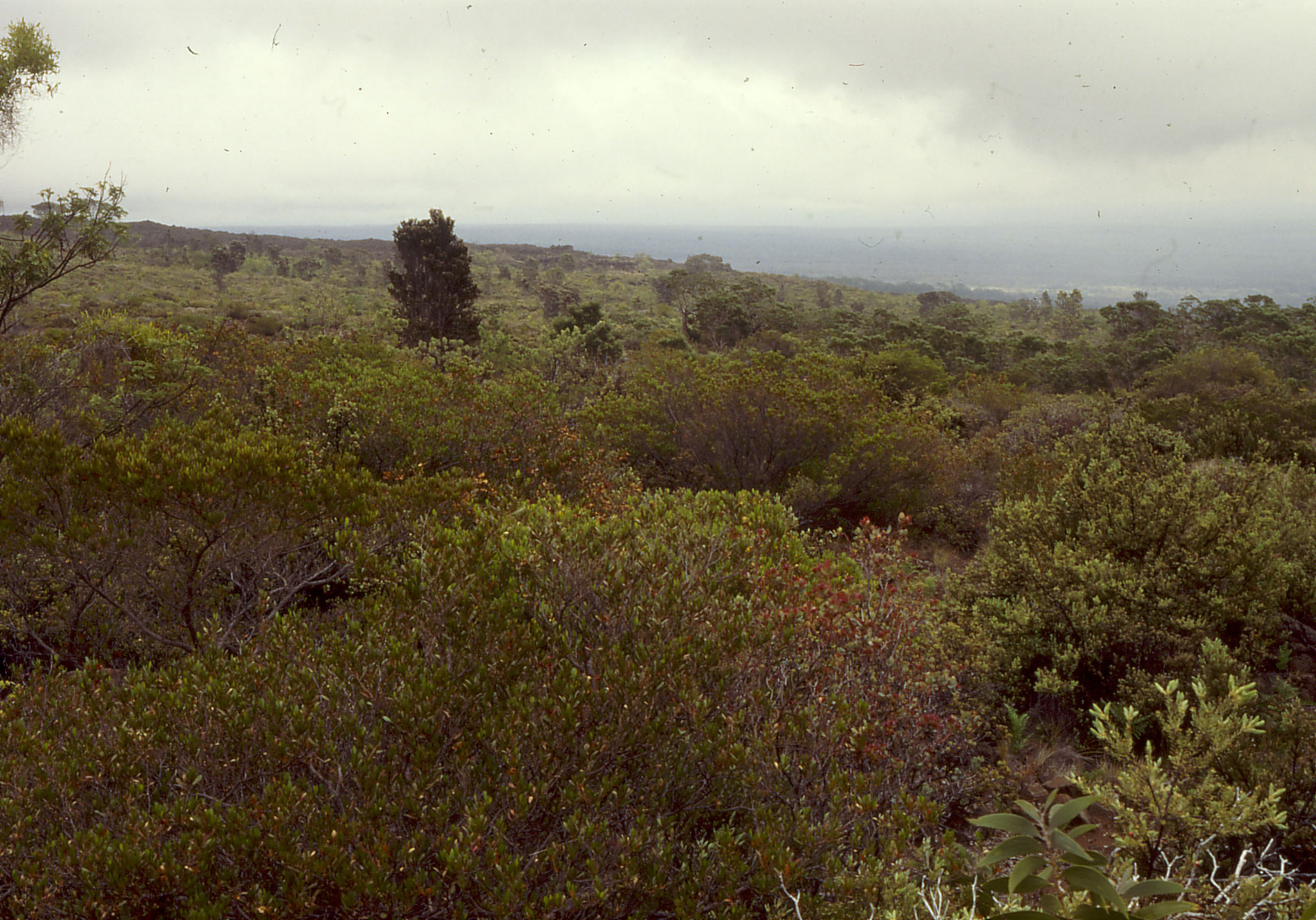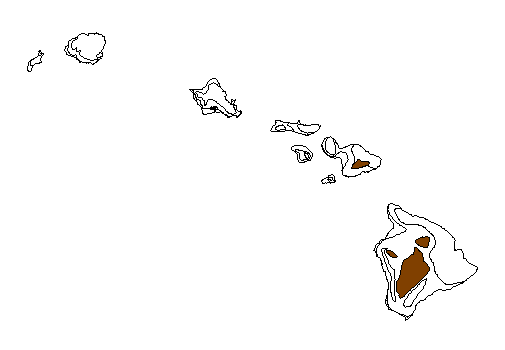The Hawaiian Tropical High Shrublands cover 1900 square kilometers. This ecosystem occurs on the upper slopes of Hawaiian volcanoes. Large areas of Hawaiian Tropical High Shrublands are found on the slopes of Mauna Loa, Mauna Kea, Hualalai, and Haleakala. The area includes open shrublands, grasslands and some desserts. The steep slopes are covered in low growing shrub like plants. Some species include the Chenopodium oahuense, Vaccinium reticulatum, Dubautia menziesii, Santalum haleakalae, and different tussock grasses. This ecosystem is home primarily to many species of birds and the Horary Bat. It provides a safe place to nest for birds, especially endangered birds such as the nene goose and dark-rumped petrel.
The Hawaiian Tropical High Shrublands occupy greater than 50% of their historic range due to various human impacts. Vegetation is highly threatened from overgrazing by livestock domestic and feral. Recreational activities are a problem in this area because of the trampling of vegetation. Hawaiian Tropical High Shrublands are vulnerable to wildfires and fires started by humans. To protect this ecosystem from these human activities organizations like The Nature Conservancy, The Nature Conservancy of Hawaii, and Hawaii Natural Heritage Program have worked with the Hawaiian government to establish parks to conserve the land.
Major threats to the ecosystem come from introduced species. The African molasses grass has been seen to out compete native grasses. The most aggressive invasive species is arguably the Argentine Ant. Since being introduced by humans 25 years ago, it has slowly invaded a large part of the Shrublands. It has been observed that this ant is causing rare and endemic arthropods species to be greatly reduced. Since these arthropods are pollinators for many of the native plants, they too have been adversely affected.
I think this ecosystem is very vulnerable to damage from humans and therefore in the coming years may continue to lose territory. However I do think progressive steps have been taken to slow the deterioration. The government of Hawaii and the aforementioned conservation groups have continued to expand protected areas to encompass more of the Shrublands. Although it was a major breakthrough to determine that the Argentine Ant is causing arthropod and plant loss, the reports lack a concrete plan to get rid of them. As they grow in number this is undoubtedly going to have a severe impact on types of vegetation found in the ecosystem. On the other hand some introduced birds have been shown to fill the niche or rare or extinct birds in seed dispersion. This is projected to help rehabilitation damaged areas.
To help preserve this ecosystem it should all be protected by the government of Hawaii. Free grazing by livestock should be reduce to certain areas and greatly restricted. Efforts should be made to research a safe way to stop the Argentine Ant without adverse effects on soil quality or other parts of the ecosystem. Compared with other parts of Hawaii, not many people travel to the Hawaiian Tropical High Shrublands. The natives of Hawaii and tourists should be made aware of the overlooked gem on their high volcanoes slopes.
This Data table shows the direct correlation between introduced species and the disappearance of native species.



No comments:
Post a Comment